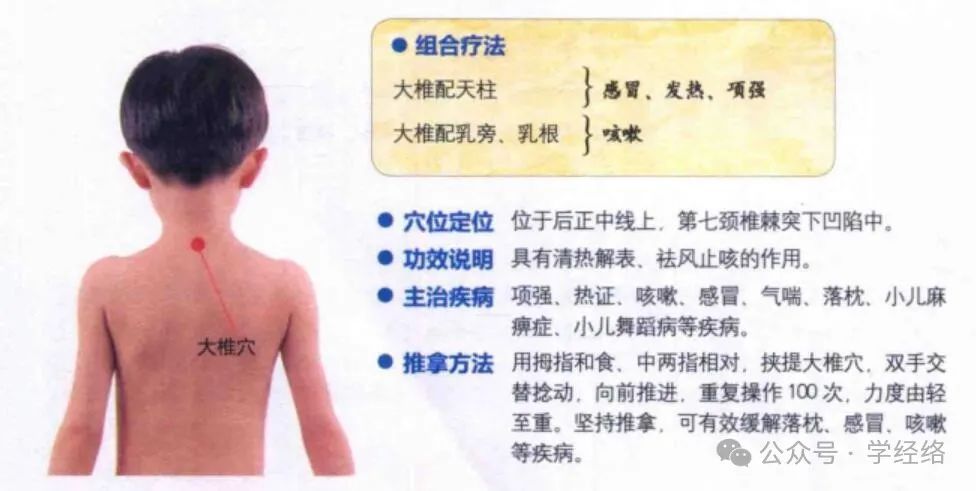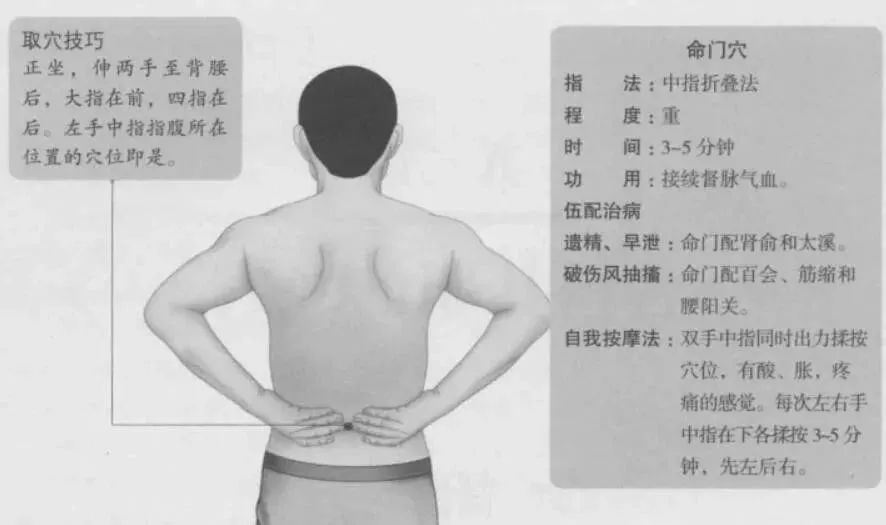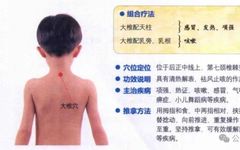The wisdom of Traditional Chinese Medicine (TCM) is vast and profound, particularly with the theory of meridians as its foundation, where acupuncture points serve as the highlights of this extensive system. Each point carries unique physiological functions and therapeutic values, harmonizing various ailments and nourishing life.
Today, we will explore the world of these nine acupuncture points and how they utilize the power of moxibustion to safeguard physical and mental health, embodying the principles of TCM health preservation.
1. Dazhui (大椎穴): The Meeting of All Yangs, The Window of Yang Qi
“The Yang among Yangs, the meeting of all Yangs,” Dazhui (Dazhui) is like a lighthouse of Yang Qi in the human body, located at a strategic point that connects seven meridians: the Du Mai (督脉), Bladder Meridian (膀胱经), Large Intestine Meridian (大肠经), Small Intestine Meridian (小肠经), Sanjiao Meridian (三焦经), Gallbladder Meridian (胆经), and Stomach Meridian (胃经).

Moxibustion on Dazhui is like igniting a “small sun” within the body, dispelling wind and cold, replenishing Yang Qi, and enhancing immunity. For conditions such as wind-cold colds, runny nose, cough, rheumatism, postpartum ailments, eczema, rhinitis, and asthma, Dazhui acts as a potent remedy with significant antipyretic and preventive effects.
It is especially crucial for the prevention and regulation of upper respiratory infections and emphysema.
2. Mingmen (命门穴): The Fire of Life, The Source of Kidney Yang
Mingmen (Mingmen) conceals the “fire of life” and is the root of Yang Qi in the body, playing a warming and promoting role in the physiological activities of the organs. When Kidney Yang is deficient, symptoms such as fatigue, poor complexion, and sensitivity to cold may arise, leading to erectile dysfunction in men and cold womb infertility in women.

Moxibustion on Mingmen is like adding fuel to the fire of life, replenishing the innate foundation, promoting organ function, and regulating fluid metabolism, fundamentally restoring Kidney Yang and nourishing the root of life.
3. Zhongwan (中脘穴): The Key to the Spleen and Stomach, The Hub of Digestion
Zhongwan (Zhongwan) is located in the stomach area and specializes in treating spleen and stomach disorders, making it a guardian of the digestive system. Whether it is bloating, diarrhea, abdominal pain, acid reflux, vomiting, constipation, jaundice, or general stomach issues, lack of appetite, dizziness, tinnitus, acne, fatigue, or neurasthenia, Zhongwan can address them all.
Moxibustion on this point can promote gastric motility, enhance immunity, and harmonize the spleen and stomach, ensuring the orderly operation of the source of life.
4. Tianshu (天枢穴): The Master of the Intestines, The Helm of Qi Mechanism
Tianshu (Tianshu), as the influential point of the Large Intestine, is responsible for regulating the intestines, moving Qi, and aiding digestion, making it a key point for abdominal regulation. For various discomforts caused by abnormal intestinal function, such as constipation, bloating, intestinal sounds, dysmenorrhea, and nephritis, moxibustion or massage on Tianshu can effectively promote intestinal motility, enhance gastric power, smooth Qi flow, and resolve stagnation, restoring normal intestinal function.
5. Shénquē (神阙穴): The Perfect Point, A Treasure for Health Preservation
Shénquē (Shenque) is uniquely praised as the “perfect acupuncture point,” not only aiding in weight loss and beauty but also harmonizing various ailments. Moxibustion on Shénquē can tonify the spleen and kidneys, benefit Qi, activate cells, moisturize and tighten the skin, accelerate metabolism, promote diuresis, warm the lower source, and dispel cold, providing women with a dual gift of beauty and health.
No matter how time flows, Shénquē always protects women’s youth and vitality.
6. Qihai (气海穴): The Source of Yuan Yang, The Fountain of Life
“Qihai warms the whole body,” Qihai (Qihai) is like the source of life energy in the human body, concerning the fullness and circulation of Yuan Qi. When Yuan Qi is insufficient or weak, moxibustion on Qihai can nourish Yuan Qi, restore Yang, and solidify the body, reviving the circulation of Qi and blood in the organs and meridians, boosting energy, and ensuring the life vessel has ample endurance.
7. Zusanli (足三里穴): A Friend of the Spleen and Stomach, A Blessing for Women
Zusanli (Zusanli) is known as a “star acupuncture point” for harmonizing the spleen and stomach and replenishing the postnatal foundation, especially effective for women’s diseases. Common issues such as cold womb, chronic gynecological inflammation, and poor follicle development can be treated with moxibustion on Zusanli.
This point can regulate the spleen and stomach, tonify Qi, dispel wind and dampness, and strengthen the body’s defenses, fundamentally improving women’s conditions of Qi and blood deficiency, preventing gynecological diseases, and promoting women’s health.
8. Sanyinjiao (三阴交穴): The Key to Eternal Youth, A Holy Hand for Gynecology
Sanyinjiao (Sanyinjiao) is revered as the “eternal youth point” for women and is considered a “miracle cure” for gynecological diseases. Moxibustion or massage on this point can regulate menstruation, improve skin, delay aging, and postpone menopause, allowing women to maintain youthful vitality through the river of time.
9. Taixi (太溪穴): The Source of the Kidney Meridian, The Convergence of Yin and Yang
Taixi (Taixi) is where the original Qi of the Kidney Meridian resides and is the first choice for kidney tonification. When Kidney Yin is insufficient, symptoms such as sore throat, oral ulcers, tinnitus, and insomnia may occur; when Kidney Yang is deficient, cold limbs and lower limb edema may arise. Moxibustion on Taixi can tonify Kidney essence, regulate Yin and Yang, effectively prevent and treat symptoms of Kidney Yin deficiency and excess Yang, protect kidney health, and maintain the balance of life Yin and Yang.
Moxibustion Practice Guidelines
When performing moxibustion on the above nine points, follow these principles for optimal results:
– For limb points: Moxibustion for 15-20 minutes each time;
– For waist and abdominal points: Moxibustion for 30-50 minutes each time;
– Multiple moxibustion boxes can be used simultaneously, completing all points in two sessions;
– Moxibustion order: Start with the back, then the abdomen, and finally the legs, following a top-to-bottom, left-to-right sequence;
– Generally, moxibustion should be performed 6 days a week, with 1-2 days of rest to ensure the body fully absorbs the moxibustion energy while avoiding excessive stimulation.
In summary, these nine acupuncture points are like nine treasures within the body. By activating their potential through moxibustion, one can harmonize various ailments and nourish life.
By following the wisdom of TCM and effectively utilizing meridian points, let us embark on the path to health and longevity together, sharing a beautiful life.
What Others Are Reading (Click the title to view)
1. Surprised by the Truth Behind “Little Millet” on the Back
2. Three Major Points to Eliminate Phlegm and Qi Stagnation Accumulated During the Spring Festival!
3. A Unique Point on the Hand to Enrich Liver Blood and Brighten Eyes, Simple and Effective
4. Two Points to Tap Twenty Times Daily to Prevent Stroke and Stimulate Yang Qi Throughout the Body!
5. Where There Is Cold, There Is Disease! Four Points to Drive Away Cold
【Learn Meridians】 Exciting Recommendations Click to Explore
| Human Meridian Inquiry | Human Acupuncture Point Inquiry | Common Disease Inquiry |
| Massage Techniques Explained | Technique Video Explanation | Pediatric Disease Inquiry |
| Hand Diagnosis | Facial Diagnosis | Nine Major Constitutions |
| Tongue Diagnosis | Back Diagnosis | Foot Reflex Zones |
If you find this helpful, please click the  To Read
To Read

